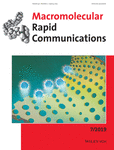Journal list menu
Export Citations
Download PDFs
Cover Picture
Organic Molecule-Driven Polymeric Actuators
- First Published: 04 April 2019
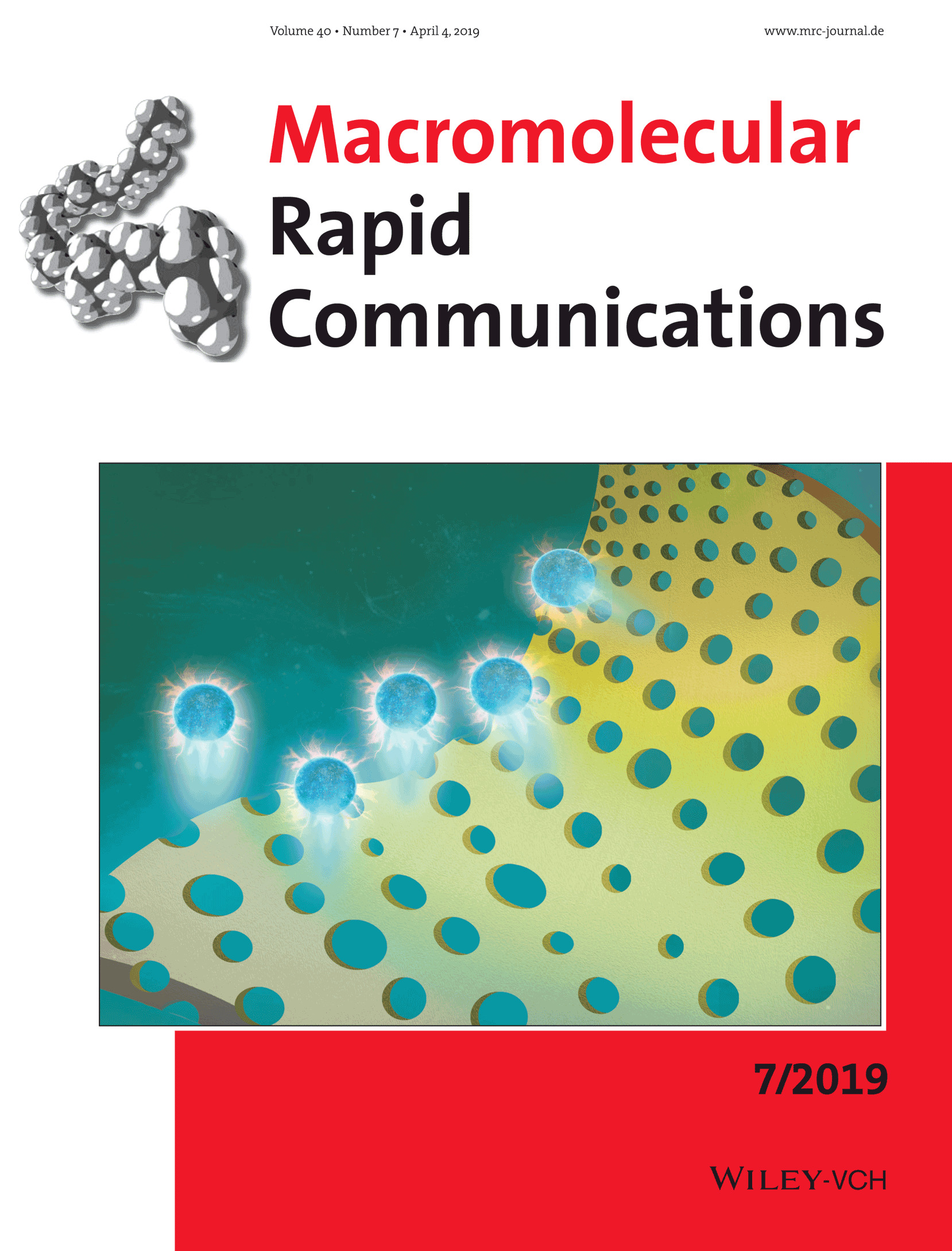
Front Cover: In article number 1800896, John W. C. Dunlop, Jiayin Yuan, and co-workers give an overview of how polymeric materials can be actuated through the absorption of organic molecules. Through the introduction of relatively simple design elements, such as controlling crystallinity or by introducing low-dimensional reinforcement, polymeric actuators can be programed to display complex macroscopic motions, with potential applications in sensing and smart systems.
Masthead
Review
Organic Molecule-Driven Polymeric Actuators
- First Published: 27 February 2019
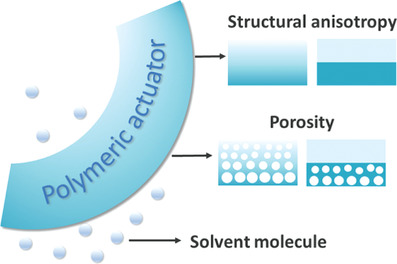
Actuating polymeric materials driven by organic molecules has been extensively explored during the past decade. Detailed discussions about design principle via tuning the molecular order, swelling ability, crystallization/molecular reconfiguration, alignment of low-dimensional elements, as well as solvent properties, are presented. The polymeric actuators exhibit macroscopic, programmable, and complicated motions, demonstrating promising applications in sensing and smart systems.
Feature Article
Self-Healing Polymeric Hydrogel Formed by Metal–Ligand Coordination Assembly: Design, Fabrication, and Biomedical Applications
- First Published: 23 January 2019
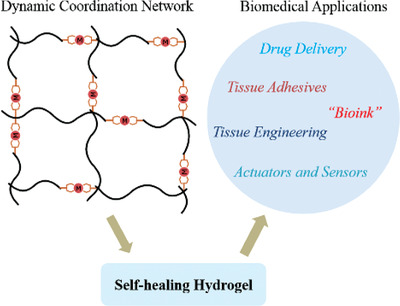
Metal–ligand coordination assembly is a promising approach for the development of dynamic polymeric networks. Various organic ligands and metal sources, such as metal ions and metal-containing particles, which can be used to fabricate self-healing hydrogels, are reviewed in this study. Five types of biomedical applications are also reviewed on the basis of these self-healing gels.
Communications
TAD Click Chemistry on Aliphatic Polycarbonates: A First Step Toward Tailor-Made Materials
- First Published: 11 January 2019
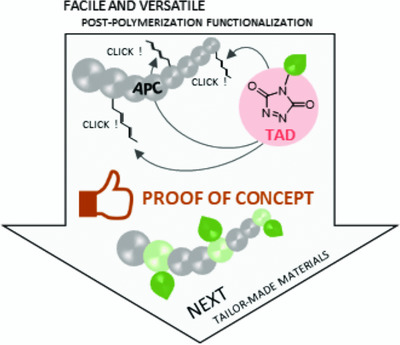
This proof of concept of triazolinedione (TAD) click chemistry onto biodegradable and biocompatible aliphatic polycarbonates paves the way of versatile and easy on-demand functionalization. For the first time, a cyclic carbonate carrying click-reactive conjugated diene is copolymerized via organocatalyzed ring-opening polymerization, followed by click reaction of TAD moieties.
A Highly Ionic Conductive, Healable, and Adhesive Polysiloxane-Supported Ionogel
- First Published: 17 January 2019

Healable polysiloxane-supported ionogel with high ionic conductivity (≈1.19 mS cm−1) and excellent recovery properties is first designed by constructing a totally physical dual-crosslinked (DC) network based on ionic aggregates among [2-(methacryloyloxy)ethyl] trimethylammonium chloride and the hydrogen bonds between poly(aminopropylmethylsiloxane) and tannic acid. Moreover, this novel ionogel can maintain its high ionic conductivity (0.36 mS cm−1) and good recovery property at subzero temperatures.
A Robust Salty Water Adhesive by Counterion Exchange Induced Coacervate
- First Published: 23 January 2019
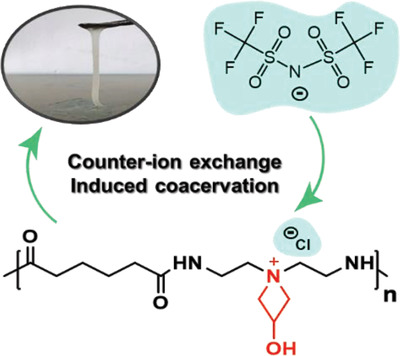
A new polyelectrolyte coacervation phenomenon is observed, whose driven forces are the interactions between large-sized counterions instead of polyelectrolyte complexation. The coacervate features high compatibility toward environmental pH and salt concentration. Thus, it highlights robust underwater adhesion in basic and salty conditions, in stark contrast to conventional complex coacervates that have been reported to fail under similar situations.
Synthesis of Polypeptoid-Polycaprolactone-Polytetrahydrofuran Heterograft Molecular Polymer Brushes via a Combination of Janus Polymerization and ROMP
- First Published: 05 February 2019
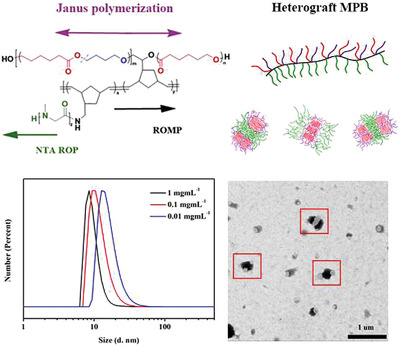
Janus polymerization becomes a robust pathway for topological design due to a novel polymerization system. Heterograft molecular polymer brushes (MPBs) are synthesized through Janus polymerization and ROMP and contain three different grafts, PCL, P(CL-co-THF), and PSar, endowing the MPBs with unique, beneficial properties.
Glycerol Induced Catalyst-Free Curing of Epoxy and Vitrimer Preparation
- First Published: 05 February 2019
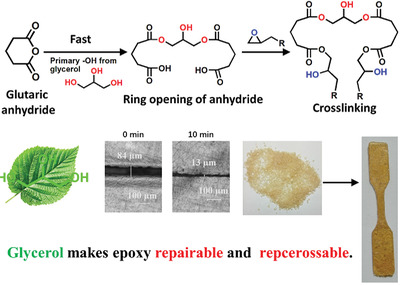
A new preparation method of catalyst-free epoxy vitrimer is developed by introducing glycerol to a commercial epoxy–anhydride curing system. Use of the resulting vitrimer for the repairable coatings is demonstrated. This method can be easily expanded to use of other polyhydric compounds as modifiers for preparation of catalyst-free vitrimers.
Nanoscale Archimedean Tilings Formed by 3-Miktoarm Star Terpolymer Thin Films
- First Published: 11 January 2019

Several (4.6.12) Archimedean tiling patterns derived from the self-assembly of 3-miktoarm star terpolymer thin films are demonstrated for the first time. The use of this (4.6.12) tiling can be a promising route to build 2D photonic crystals having complete photonic band gaps, where the light propagation is completely prohibited.
Biomolecule Sensor Based on Azlactone-Modified Hydrogel Films
- First Published: 27 December 2018
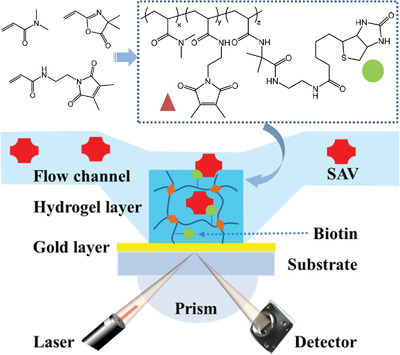
An azlactone-supported terpolymer is synthesized via reversible addition-fragmentation chain-transfer polymerization and then modified with a primary amine group bearing biotin to obtain a functional terpolymer. A hydrogel film constructed by the terpolymer is able to form a sensor chip to quantitatively detect streptavidin by using surface plasmon resonance–optical waveguide spectroscopy.
Hybrid Janus Microparticles Achieving Selective Encapsulation for Theranostic Applications via a Facile Solvent Emulsion Method
- First Published: 20 December 2018
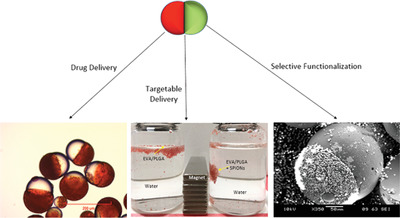
Polymeric Janus particles equipped with drug delivery, targetable capability, as well as functionalized surface anisotropy, are fabricated through a simple one-pot solvent emulsion synthesis. Janus particles of different polymeric combinations fabricated by this method show unique drug release profiles, allowing for synergistic drug release in a myriad of ways.




